
伤口世界
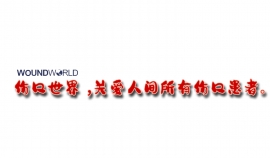
- 星期二, 30 5月 2023
Guidelines on the prevention of foot ulcers in persons with diabetes IWGDF 2023 update
AUTHORS
Sicco A. Bus1,2, Isabel C.N Sacco3 , Matilde Monteiro-Soares4,5,6, Anita Raspovic7 , Joanne Paton8 , Anne Rasmussen9 , Larry A. Lavery10, Jaap J. van Netten1,2, on behalf of the International Working Group on the Diabetic Foot
INSTITUTIONS
1 Amsterdam UMC, University of Amsterdam, Department of Rehabilitation Medicine, Amsterdam, the Netherlands
2 Amsterdam Movement Sciences, program Rehabilitation & Development, Amsterdam, the Netherlands
3 Physical Therapy, Speech and Occupational Therapy department, School of Medicine, University of São Paulo, São Paulo, Brazil
4 Higher School of Health of the Portuguese Red Cross, Lisbon, Portugal
5 Department of Community Medicine, Information and Health Decision Sciences (MEDCIDS), Faculty of Medicine, University of Porto, Porto, Portugal
6 RISE@ CINTESIS, Faculty of Medicine, Oporto University, Porto, Portugal
7 Discipline of Podiatry, School of Allied Health, Human Services and Sport, La Trobe University, Melbourne, Victoria, Australia
8 School of Health Professions, University of Plymouth, Plymouth, UK
9 Steno Diabetes Center Copenhagen, Herlev, Denmark
10 Department of Plastic Surgery, University of Texas Southwestern Medical Center, Dallas, Texas, USA

- 星期五, 26 5月 2023
Guidelines on the diagnosis and treatment of foot infection in persons with diabetes IWGDF/IDSA 2023
AUTHORS
Éric Senneville1 , Zaina Albalawi2 , Suzanne A.
van Asten3 , Zulfiqarali G. Abbas4 , Geneve Allison5 ,
Javier Aragón-Sánchez6 , John M. Embil7 , Lawrence
A. Lavery8 , Majdi Alhasan9 , Orhan Oz10, Ilker
Uçkay11, Vilma Urbančič-Rovan12, Zhang-Rong Xu13,
Edgar J.G. Peters14, on behalf of the International
Working Group on the Diabetic Foot
INSTITUTIONS
1 Department of Infectious Diseases, Gustave Dron Hospital, Tourcoing, France
2 Department of Medicine, Division of Endocrinology, Memorial University, Canada
3 Leiden University Medical Centre, Leiden, the Netherlands
4 Abbas Medical Centre, Muhimbili University of Health and Allied Sciences, Dar es Salaam, Tanzania
5 Tufts Medical Center, Department of Medicine, Boston, Massachusetts, USA
6 La Paloma Hospital, Las Palmas de Gran Canaria, Spain
7 Alberta Public Laboratories, University of Alberta Hospital, Edmonton, Alberta, Canada
8 Department of Plastic Surgery, Southwestern Medical Center, Dallas, Texas, USA
9 Department of Medicine, Prisma Health-Midlands, Columbia, South Carolina, USA
10 UT Southwestern Medical Center, Dallas, Texas, USA
11 Balgrist University Hospital, Zurich, Switzerland
12 Faculty of Medicine, University Medical Centre, University of Ljubljana, Ljubljana, Slovenia
13 Diabetes Centre, The 306th Hospital of PLA, Beijing, China
14 Department of Internal Medicine, Infection and Immunity Institute, Amsterdam UMC, Vrije Universiteit Amsterdam, Amsterdam, the Netherlands
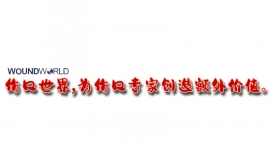
- 星期二, 23 5月 2023
Wound drainage measurements: a narrative review
Terri Shih1 · Sarah Park1 · Linnea R. Thorlacius2,3 · Steven Daveluy4 · Amit Garg5 · Susanne D. Goegji6 · Joslyn S. Kirby7 · Barry M. McGrath8 · Peter T. Riis2 · Bente Villumsen9 · Kari Zalik10 · Gregor B. E. Jemec2,11 · Jennifer L. Hsiao12
Received: 16 July 2022 / Revised: 7 December 2022 / Accepted: 6 January 2023 © The Author(s) 2023
Abstract
Drainage from chronic wounds can significantly negatively impact a patient’s quality of life. Change in severity of wound drainage is an important measure of treatment efficacy for wounds. This study reviews existing tools used to assess wound drainage. Qualitative drainage tools are overall less burdensome, and however, differences in user interpretation may reduce inter-rater reliability. Quantitative drainage tools enable more reliable comparisons of drainage severity and treatment response between patients but sometimes require equipment to administer, increasing responder burden. Gaps in the current wound drainage measurement landscape are highlighted. Many of the existing scales have not been validated in robust studies. There is also a lack of validated global drainage measurement tools for patients with chronic inflammatory skin disorders with drainage, such as hidradenitis suppurativa or pyoderma gangrenosum. Development of a succinct drainage measurement tool for inflammatory skin diseases where drainage is a prominent symptom will improve monitoring of meaningful treatment response.
Keywords Hidradenitis suppurativa · Wound · Drainage · Measure · Tool
Jennifer L. Hsiao
该Email地址已收到反垃圾邮件插件保护。要显示它您需要在浏览器中启用JavaScript。
1 David Gefen School of Medicine, University of California Los Angeles, Los Angeles, CA, USA
2 Department of Dermatology, Zealand University Hospital, Roskilde, Denmark
3 Department of Dermato-Venereology & Wound Healing Centre, Bispebjerg Hospital, Copenhagen, Denmark
4 Department of Dermatology, Wayne State University, Detroit, MI, USA
5 Department of Dermatology, Donald and Barbara Zucker School of Medicine at Hofstra/Northwell, New Hyde Park, NY, USA
6 Amsterdam, The Netherlands
7 Department of Dermatology, Penn State Milton S. Hershey Medical Center, Hershey, PA, USA
8 HS Ireland, County Clare, Ireland
9 Danish HS Patients’ Association, Copenhagen, Denmark
10 Toronto, Canada
11 Health Sciences Faculty, University of Copenhagen, Copenhagen, Denmark
12 Department of Dermatology, University of Southern California, 1441 Eastlake Ave, Ezralow Tower, Suite 5301, Los Angeles, CA 90033-9174, USA
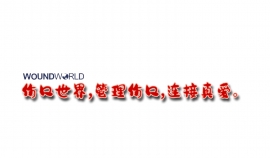
- 星期一, 22 5月 2023
The Role of Conservative Management in the Avascular Necrosis of the Femoral Head: A Review of Systematic Reviews
M. L. V. Sai Krishna1 iD· Santanu Kar1 iD · Raj Kumar1 · Hargovind Singh1 · Ravi Mittal1 iD· Vijay Kumar Digge1 iD
Received: 29 July 2022 / Accepted: 6 January 2023 / Published online: 3 February 2023
© Indian Orthopaedics Association 2023
Abstract
Introduction/Background Multiple medical and surgical treatments have been described in the early stages of Avascular Necrosis (AVN) of the femoral head which delay the disease progression. Similarly, multiple studies, trials, reviews, and systematic reviews exist for the various treatments described and their outcomes but with no consensus over which is superior. So in this study, we reviewed the systematic reviews of all the conservative therapies for AVN of the femoral head systematically to identify a single or a combination of non-surgical treatment choices in the initial stages of the disease.
Methodology A thorough literature search has been carried out in January 2022 through the use of Pubmed, EMBASE, and Cochrane electronic databases using PRISMA guidelines. The Mesh words and Keywords used were “femoral head AVN”, “Conservative management”, and “Systematic Reviews”. The inclusion criteria used during the screening were, any systematic reviews which included patients with AVN either idiopathic or secondary, who are managed with conservative therapies like bisphosphonates, Hyper Baric Oxygen Therapy (HBOT), Shock wave therapies like Extracorporeal Shock Wave Therapy (ESWT), or electrical therapy like Pulsed Electro Magnetic Field (PEMF). The quality of the included systematic reviews was assessed using AMSTAR-2 criteria.
Results The initial search yielded 364 studies which on screening based on our inclusion criteria finally resulted in seven systematic reviews to be included in the present study. There were two systematic reviews for Hyper Baric Oxygen Therapy (HBOT), two for Extracorporeal Shock Wave Therapy (ESWT), one for electrical stimulation modalities like Pulsed Electro Magnetic Field (PEMF), and two for bisphosphonates. The follow-up of the patients in the included systematic reviews varied from 6 weeks to 10 years. The total number of patients varied from 77 to over 1000 across the systematic reviews. Almost all of the studies included a control group that either received the intended treatment with adjuncts or did not receive any treatment at all. Because of the heterogeneous nature of included articles in the systematic reviews, meta-analysis was performed in only three of the included systematic reviews.
Conclusion Of all the modalities of treatment described, bisphosphonates are easily available and cost-effective and do not require any hospital resources/machinery for delivering the treatment. So they can be used as an initial line of treatment for patients with early stages of AVN (Ficat and Arlet 1–3) and based on the hospital availability of resources could be supplemented with any of the biophysical modalities (ESWT/PEMF/HBOT) for maximum efficacy to delay the disease progression.
Level of Clinical Evidence Systematic review.
Keywords Femoral head AVN · Conservative management · Bisphosphonates · ESWT · PEMF · HBOT · Systematic review
Vijay Kumar Digge 该Email地址已收到反垃圾邮件插件保护。要显示它您需要在浏览器中启用JavaScript。
M. L. V. Sai Krishna 该Email地址已收到反垃圾邮件插件保护。要显示它您需要在浏览器中启用JavaScript。
Santanu Kar 该Email地址已收到反垃圾邮件插件保护。要显示它您需要在浏览器中启用JavaScript。
Raj Kumar 该Email地址已收到反垃圾邮件插件保护。要显示它您需要在浏览器中启用JavaScript。
Hargovind Singh 该Email地址已收到反垃圾邮件插件保护。要显示它您需要在浏览器中启用JavaScript。
Ravi Mittal 该Email地址已收到反垃圾邮件插件保护。要显示它您需要在浏览器中启用JavaScript。
1 Department of Orthopaedics, All India Institute of Medical Sciences (AIIMS), Room No 3096, 3rd Floor, Teaching Block, New Delhi, India
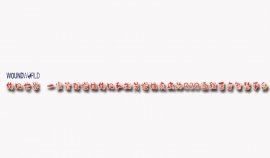
- 星期五, 19 5月 2023
Skin Pigmentation Impacts the Clinical Diagnosis of Wound Infection: Imaging of Bacterial Burden to Overcome Diagnostic Limitations
Jonathan Johnson1 · Alton R. Johnson Jr.2 · Charles A. Andersen3 · Martha R. Kelso4 · Alisha R. Oropallo5 · Thomas E. Serena6 iD
Received: 4 November 2022 / Revised: 22 March 2023 / Accepted: 31 March 2023
© The Author(s) 2023
Abstract
Underrepresentation of diverse skin tones in medical education and providers’ implicit racial bias drives inequities in wound care, such as disproportionally poor outcomes for Black patients. Diagnostic indicators (e.g., erythema) can present differently depending on skin pigmentation. This post hoc analysis of 350 chronic wounds from a prospective 14-site clinical trial aimed to determine how the perception of clinical signs and symptoms of infection (CSS) differs by patient skin tone and if fluorescence-imaging can offer a more objective diagnostic solution. Participants were grouped by skin tone (low,
medium, high) as measured by the Fitzpatrick Skin Phototype Classification (FSPC) scale. CSS and total bacterial load
(TBL) were compared across FSPC groups, along with sensitivity to detect TBL >104 CFU/g using CSS alone and combined
with fluorescence-imaging. Erythema was reported less often with increasing FSPC score (p = 0.05), from 13.4% (low),
to 7.2% (medium), to 2.3% (high), despite comparable bacterial loads (median = 1.8 × 106 CFU/g). CSS sensitivity in the
high group (2.9%) was 4.8-fold to 8.4-fold lower than the low (p = 0.003) and medium groups (p = 0.04). Fluorescenceimaging significantly improved the detection of high bacterial load in each group, peaking in the high group at 12-fold
over CSS alone. These findings underscore the threat of pervasive racialized health inequities in wound care, where missed
diagnosis of pathogenic bacteria and infection could delay treatment, increasing the risk of complications and poor outcomes.
Fluorescence-imaging is poised to fill this gap, at least in part, serving as a more objective and equitable indicator of wound bacteria. Clinicaltrials.gov#NCT03540004 registered 16-05-2018.
Keywords Bacterial load · Erythema · Fluorescence imaging · Infection · Medical education · Skin pigmentation
Thomas E. Serena
该Email地址已收到反垃圾邮件插件保护。要显示它您需要在浏览器中启用JavaScript。
1 Comprehensive Wound Care Services and Capital Aesthetic & Laser Center, Washington, DC, USA
2 University of Michigan School of Medicine in the Division of Metabolism, Endocrinology and Diabetes-Podiatry, Ann Arbor, MI, USA
3 Madigan Army Medical Center Joint Base Lewis-McChord, Tacoma, WA, USA
4 Wound Care Plus LLC, Blue Springs, MO, USA
5 Comprehensive Wound Healing Center and Hyperbarics, Northwell Health and Department of Vascular Surgery, Zucker School of Medicine Hofstra/Northwell, Hempstead, NY, USA
6 SerenaGroup Research Foundation, Cambridge, MA, USA
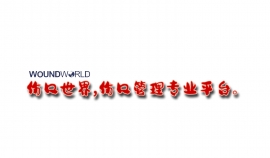
- 星期三, 17 5月 2023
Single use Negative Pressure Wound Therapy (NPWT) system in the management of knee arthroplasty
Wai-Wang Chau1† iD , Kelvin Chin-Hei Lo2†, Lawrence Chun-Man Lau1 iD, Michael Tim-Yun Ong1 and Kevin Ki-Wai Ho3*iD
Abstract
Background Wound complication, skin blister formation in particular, causes devastating consequences after total knee arthroplasty (TKA). Negative Pressure Wound Therapy (NPWT) tries to improve wound management leading to decrease length of hospital stay and better clinical outcomes. Low body mass index (BMI) could play a part in wound recovery management although lacking evidence. This study compared length of hospital stay and clinical outcomes between NPWT and Conventional groups, and factors affected and how BMI affected.
Methods This was a retrospective clinical record review of 255 (160 NPWT and 95 Conventional) patients between 2018 and 2022. Patient demographics including body mass index (BMI), surgical details (unilateral or bilateral), length of hospital stay, clinical outcomes including skin blisters occurrence, and major wound complications were
Results Mean age of patients at surgery was 69.95 (66.3% were female). Patients treated with NPWT stayed significantly longer in the hospital after joint replacement (5.18 days vs. 4.55 days; p=0.01). Significantly fewer patients treated with NPWT found to have blisters (No blisters: 95.0% vs. 87.4%; p=0.05). In patients with BMI<30, percentage of patients requiring dressing change was significantly lower when treated with NPWT than conventional (0.8% vs. 33.3%).
Conclusion Percentage of blisters occurrence in patients who underwent joint replacement surgery is significantly lower using NPWT. Patients using NPWT stayed significantly longer in the hospital after surgery because significant proportion received bilateral surgery. NPWT patients with BMI<30 were significantly less likely to change wound
Keywords Negative pressure wound therapy, Length of hospital stay, Skin blister formation, BMI
† Wai-Wang Chau and Kelvin Chin-Hei Lo are Co-first authors and contributed equally to this work.
*Correspondence:
Kevin Ki-Wai Ho
该Email地址已收到反垃圾邮件插件保护。要显示它您需要在浏览器中启用JavaScript。
1 Department of Orthopaedics and Traumatology, Chinese University of Hong Kong, Shatin, Hong Kong SAR
2 Department of Orthopaedics and Traumatology, Alice Ho Miu Ling Nethersole Hospital, Tai Po, Hong Kong SAR
3 Department of Orthopaedics and Traumatology, Chinese University of Hong Kong Medical Centre, Shatin, Hong Kong SAR
© The Author(s) 2023. Open Access This article is licensed under a Creative Commons Attribution 4.0 International License, which permits use, sharing, adaptation, distribution and reproduction in any medium or format, as long as you give appropriate credit to the original author(s) and the source, provide a link to the Creative Commons licence, and indicate if changes were made. The images or other third party material in this article are included in the article’s Creative Commons licence, unless indicated otherwise in a credit line to the material. If material is not included in the article’s Creative Commons licence and your intended use is not permitted by statutory regulation or exceeds the permitted use, you will need to obtain permission directly from the copyright holder. To view a copy of this licence, visit http://creativecommons.org/licenses/by/4.0/. The Creative Commons Public Domain Dedication waiver (http://creativecommons.org/publicdomain/zero/1.0/) applies to the data made available in this article, unless otherwise stated in a credit line to the data.
